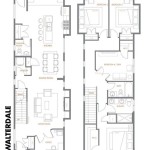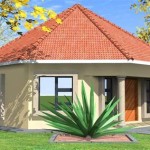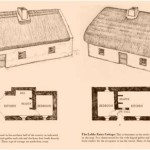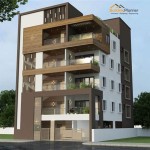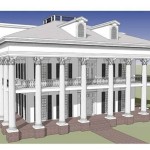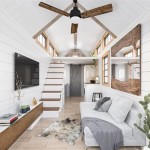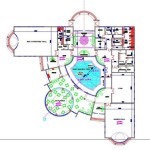Rosemary Beach, Florida: Exploring House Plan Aesthetics and Considerations
Rosemary Beach, Florida, a meticulously planned community along the scenic Highway 30A, stands as a testament to New Urbanism principles. Its architectural style, deeply influenced by Dutch colonial and West Indies designs, creates a harmonious and visually appealing environment. Understanding the nuances of Rosemary Beach house plans is essential for anyone considering building or renovating within this unique coastal enclave.
The architectural guidelines of Rosemary Beach are strict and designed to maintain the community's distinctive character. These guidelines address various aspects of construction, from the overall building footprint to the specific materials used for exterior finishes. Prospective homeowners and builders must navigate these regulations to ensure their house plans align with the established aesthetic standards.
Key Elements of Rosemary Beach Architectural Style
Several defining characteristics distinguish Rosemary Beach architecture. A key element is the emphasis on outdoor living. Houses typically feature expansive porches, balconies, and courtyards, designed to maximize enjoyment of the pleasant coastal climate and foster a sense of community interaction. These outdoor spaces often seamlessly integrate with the interior living areas, blurring the line between indoors and out.
Material selection is another crucial aspect. Natural materials are favored, including wood, stucco, and brick. Color palettes are generally muted, with earth tones and subtle variations creating a cohesive visual landscape. Rooflines are often steeply pitched, adding to the architectural drama and providing ample attic space for storage or potential expansion. The use of wood shutters, exposed rafter tails, and decorative brackets further enhances the architectural detailing.
Furthermore, the placement of buildings within their lots is carefully considered. Houses are often situated close to the street, encouraging pedestrian activity and creating a sense of enclosure. Rear alleys provide access to garages and parking, minimizing the visual impact of vehicles on the streetscape. This deliberate planning contributes to the overall pedestrian-friendly atmosphere of Rosemary Beach.
Navigating Rosemary Beach Architectural Guidelines
The Rosemary Beach Property Owners Association (POA) plays a pivotal role in enforcing the architectural guidelines. Before any construction or renovation can begin, detailed house plans must be submitted to the POA for review and approval. This review process ensures that the proposed design adheres to the established standards and contributes positively to the community's overall aesthetic.
The approval process can be rigorous, requiring multiple revisions and adjustments to the house plans. It is highly recommended that homeowners and builders work closely with architects and designers who are familiar with the Rosemary Beach architectural guidelines. These professionals can provide valuable guidance and ensure that the design meets the POA's requirements.
Specific guidelines address various aspects of the design, including setbacks, height restrictions, material choices, and landscaping requirements. For instance, the maximum building height is typically limited to three stories, and specific regulations govern the size and placement of windows and doors. Landscaping must complement the architectural style and contribute to the overall green space within the community.
The architectural review process aims to preserve the unique character of Rosemary Beach while allowing for individual expression within the established framework. While the guidelines may seem restrictive, they are designed to protect the long-term value and aesthetic appeal of the community.
Planning Considerations for Rosemary Beach House Plans
Beyond adhering to the architectural guidelines, several practical considerations should inform the development of Rosemary Beach house plans. The coastal environment presents unique challenges, including exposure to salt air, high humidity, and the potential for hurricanes. House plans must incorporate features that mitigate these risks and ensure the durability of the structure.
Elevating the house above the base flood elevation is crucial to protect against flooding during heavy rains or storm surges. This typically involves constructing the house on pilings or a raised foundation. Materials that are resistant to salt air and moisture, such as marine-grade lumber and corrosion-resistant fasteners, should be used throughout the construction process.
Energy efficiency is another important consideration. House plans should incorporate features that minimize energy consumption and reduce utility costs. This may include using energy-efficient windows and doors, installing high-performance insulation, and incorporating passive solar design principles. Proper ventilation is also essential to reduce humidity and prevent mold growth.
The size and layout of the house should be carefully considered to meet the needs of the homeowners while maximizing the use of the available space. Open floor plans are popular in Rosemary Beach, creating a sense of spaciousness and allowing for easy flow between living areas. Ample storage space is also essential, particularly for beach gear and outdoor equipment.
The integration of technology into the house plans is another important factor. Home automation systems can enhance convenience, security, and energy efficiency. Features such as smart thermostats, automated lighting controls, and remote security systems can be seamlessly integrated into the design.
Furthermore, accessibility considerations should be addressed, particularly for homeowners who plan to age in place. Incorporating features such as wider doorways, grab bars in bathrooms, and ramps can make the house more accessible for people with mobility challenges.
Finally, the long-term maintenance of the house should be considered during the planning process. Choosing durable materials and incorporating features that simplify maintenance can help reduce upkeep costs and ensure the longevity of the structure. Regular inspections and maintenance are essential to prevent problems and maintain the value of the property.
The Role of Landscape Design in Rosemary Beach
Landscape design plays an integral role in complementing the architectural style of Rosemary Beach and enhancing the overall aesthetic character of the community. The architectural guidelines extend to landscaping, dictating the types of plants that can be used, the placement of trees and shrubs, and the overall design principles.
Native plants are strongly encouraged, as they are well-suited to the local climate and require less maintenance than non-native species. These plants also provide habitat for local wildlife and contribute to the ecological balance of the area. Drought-tolerant plants are also favored, as they conserve water and reduce the need for irrigation.
The landscaping should complement the architectural style of the house, creating a seamless transition between the built environment and the natural surroundings. The use of hedges, fences, and walls can define property lines and create privacy, while also enhancing the visual appeal of the landscape.
Outdoor lighting is another important aspect of landscape design. Well-placed lighting can enhance the beauty of the landscape at night, while also providing safety and security. Low-voltage lighting is often used to minimize energy consumption and reduce light pollution.
The overall goal of landscape design in Rosemary Beach is to create a harmonious and sustainable environment that enhances the quality of life for residents and contributes to the overall beauty of the community. By adhering to the architectural guidelines and incorporating thoughtful design principles, homeowners can create landscapes that are both visually appealing and environmentally responsible.
Sustainable Building Practices in Rosemary Beach
Increasingly, sustainable building practices are being incorporated into Rosemary Beach house plans. This reflects a growing awareness of the importance of environmental stewardship and a desire to minimize the impact of construction on the natural environment. Sustainable building practices encompass a wide range of strategies, from using recycled materials to designing energy-efficient buildings.
One key aspect of sustainable building is the use of recycled and renewable materials. Materials such as recycled lumber, reclaimed brick, and bamboo flooring can reduce the demand for virgin resources and minimize waste. These materials often have unique aesthetic qualities that can enhance the character of the house.
Water conservation is another important consideration. Rainwater harvesting systems can collect rainwater for irrigation and other non-potable uses. Low-flow fixtures, such as toilets and showerheads, can reduce water consumption inside the house. Xeriscaping, which is a landscaping technique that uses drought-tolerant plants, can minimize the need for irrigation.
Energy efficiency is also a critical component of sustainable building. High-performance insulation, energy-efficient windows and doors, and solar panels can significantly reduce energy consumption. Smart home technologies can further optimize energy use by automatically adjusting thermostats and lighting based on occupancy and weather conditions.
Proper waste management during construction is also essential. Recycling construction debris, such as wood, metal, and concrete, can reduce landfill waste and conserve resources. Using modular construction techniques can minimize waste by prefabricating building components in a controlled factory environment.
Furthermore, indoor air quality is an important consideration. Using low-VOC paints, adhesives, and sealants can minimize the release of harmful chemicals into the indoor environment. Proper ventilation is also essential to remove pollutants and maintain healthy indoor air quality.
Sustainable building practices not only benefit the environment, but they can also improve the comfort and health of homeowners. Energy-efficient homes are often more comfortable to live in, with more consistent temperatures and better air quality. Sustainable materials can also be more durable and require less maintenance over time.
By embracing sustainable building practices, homeowners in Rosemary Beach can create houses that are both beautiful and environmentally responsible, contributing to the long-term health and sustainability of the community.

Rosemary Sketchpad House Plans

Rosemary Sketchpad House Plans

The Rosemary Beach Gmf Architects House Plans

Domin Bock Rosemary Beach Home Study Model House Design Architecture Rendering

Sandcastle Watersound Origins Rosemary Beach Fl Trulia

Tour A Favorite Rosemary Beach House And More Design Chic

Stunning Luxury Compound South Of 30a In Rosemary Beach Florida Real Estate Properties

Coastal Vacation House In Rosemary Beach Lists For 4 2m Photos Y Pads

Design Dump Rosemary Beach House
:max_bytes(150000):strip_icc()/aiken-street_1_1_1-3932223768bd4a798f629ef7e5864327.jpg?strip=all)
Our Best Beach House Plans For Cottage

